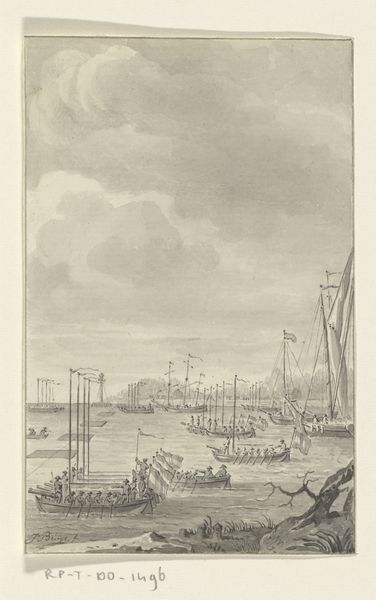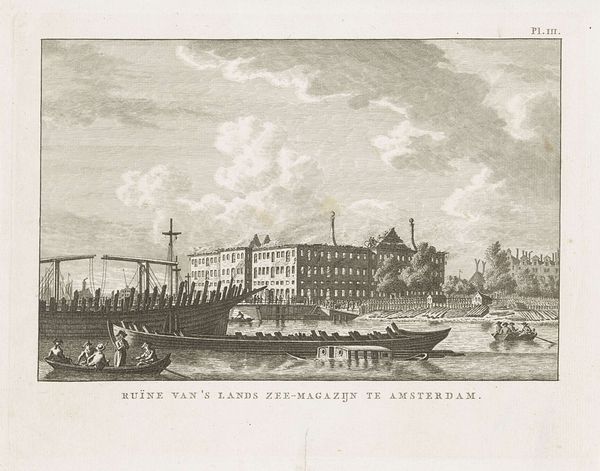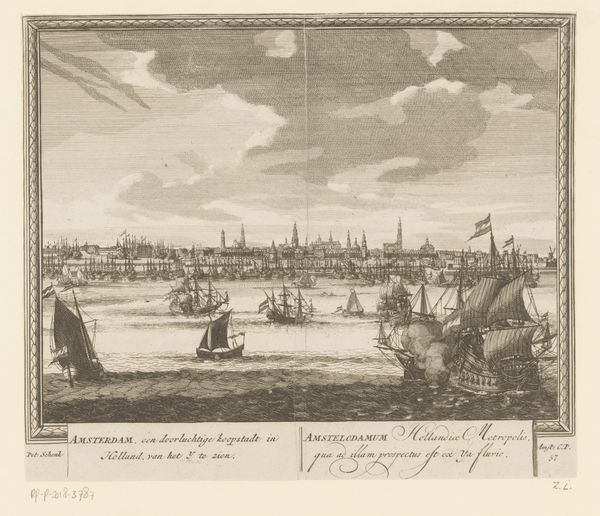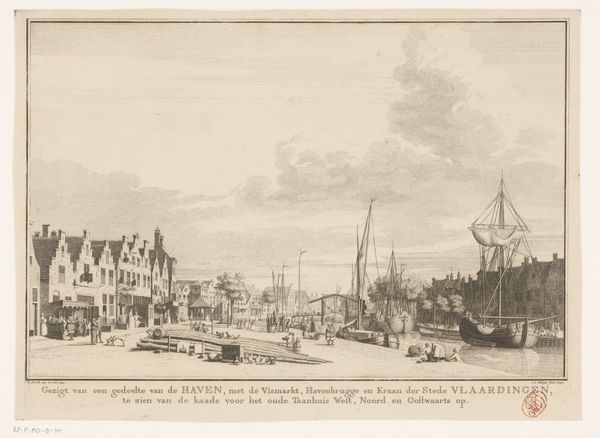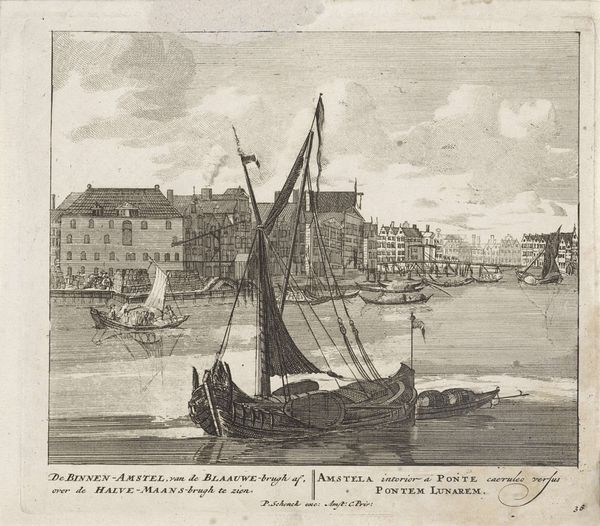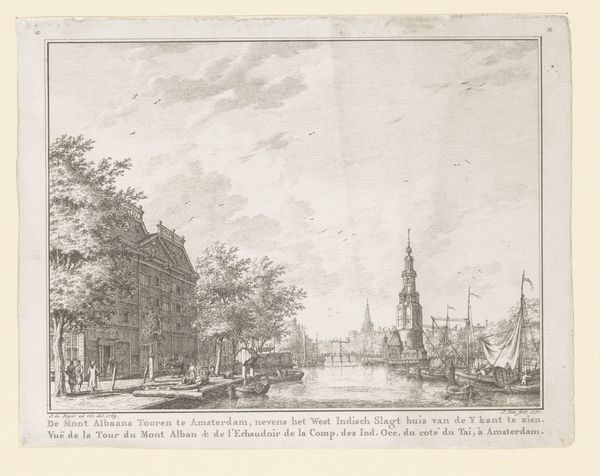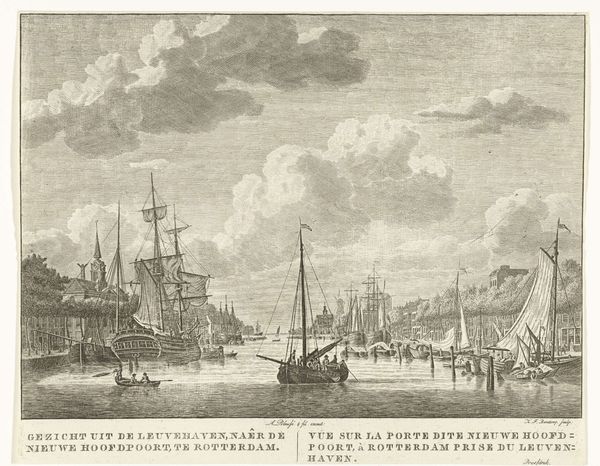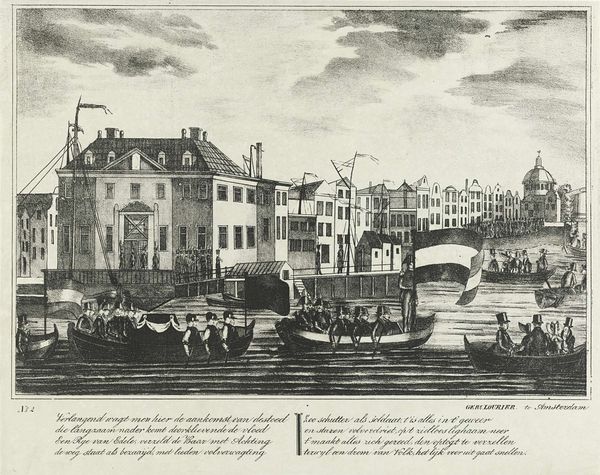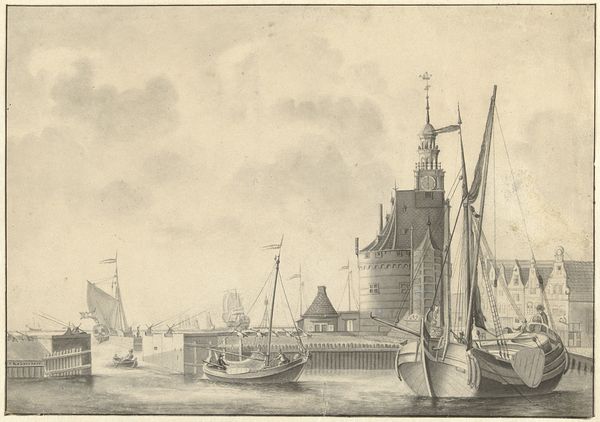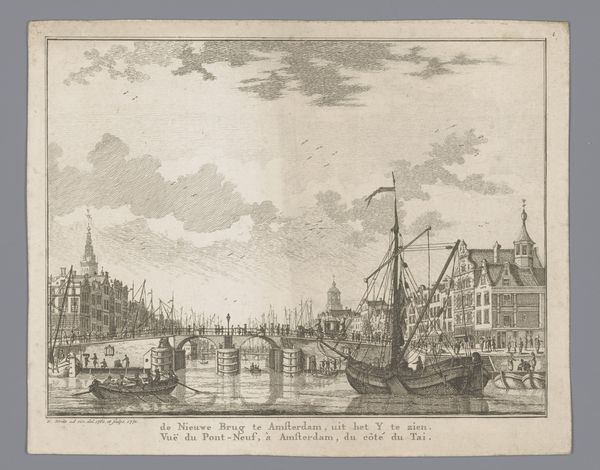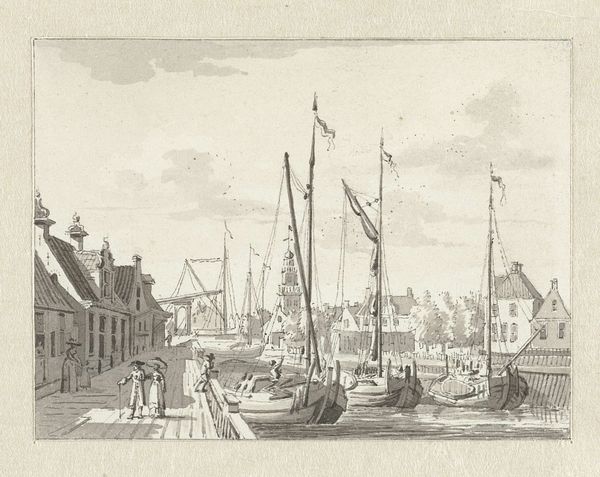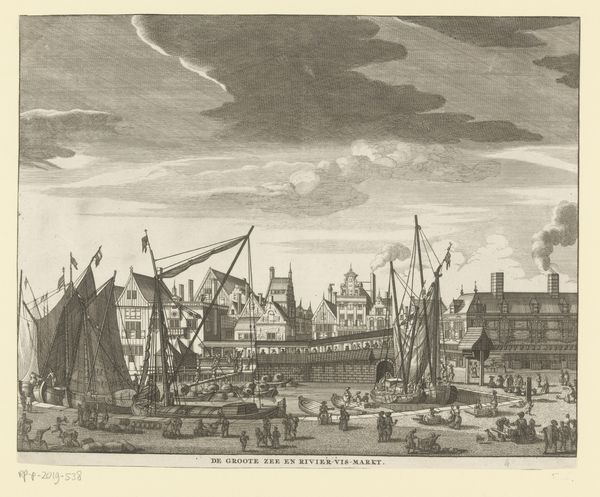
Dimensions: height 160 mm, width 202 mm
Copyright: Rijks Museum: Open Domain
Curator: What first strikes you about Willem Writs’ 1770 engraving, “Nieuwe Korenbeurs Amsterdam, vanaf het water gezien?” It depicts the Amsterdam grain exchange. Editor: The detail is incredible for an engraving! The texture of the water and the clouds are amazing. What's really interesting to me is seeing this hub of commerce presented so calmly. How can you interpret this work? Curator: For me, it’s about the means of production and distribution of a staple resource. Look at how Writs painstakingly crafted this image using the engraving technique. It was a laborious and skilled craft to reproduce these images for a wider audience. The grain exchange itself represents a crucial node in the vast network of resource management, linking producers, traders, and consumers. This calm exterior belies complex labor relationships that drive the economy. How does the portrayal of this relate to art of the time? Editor: So it's less about the beauty of the cityscape, and more about highlighting the labor and economic systems at play. Interesting. The technique shows this. Are you saying that an etching allows this sort of democratization and is more available to different class structures? Curator: Exactly. Printmaking democratized image dissemination; engraving, with its detail, reflects value. It asks us to consider accessibility in art as it relates to social dynamics and how crucial resources were distributed. What else did you observe? Editor: That's a fascinating way to think about it, seeing beyond the calm exterior of a city scene. I now notice the repetitive, almost manufactured look of the boats. It really makes me see this image in a new light! Thank you! Curator: Indeed. Now the artistic endeavor gives insights into understanding the culture of production and social structure!
Comments
No comments
Be the first to comment and join the conversation on the ultimate creative platform.
